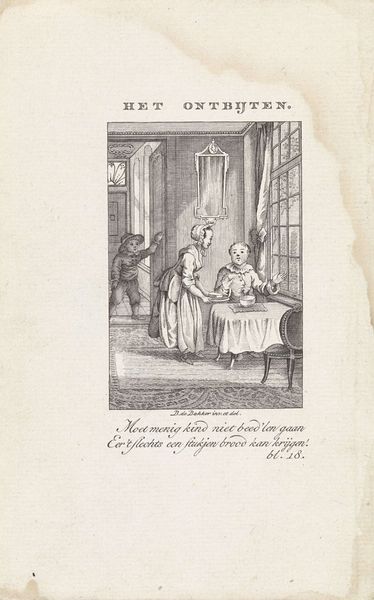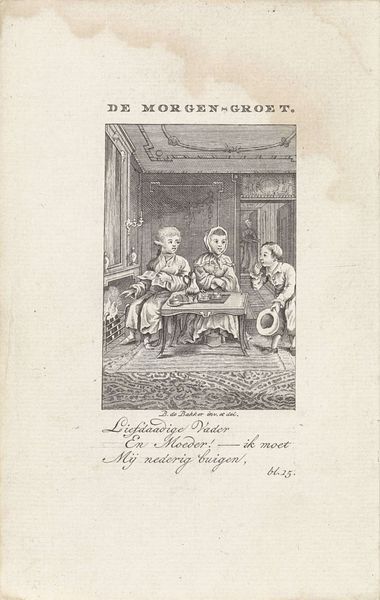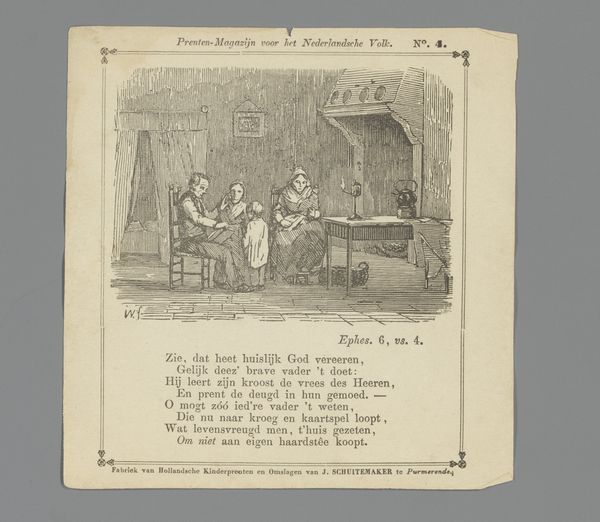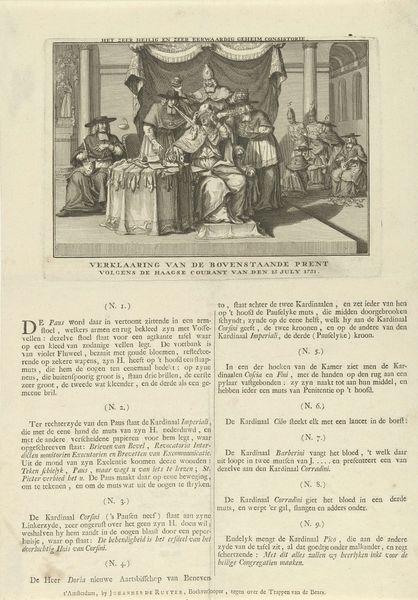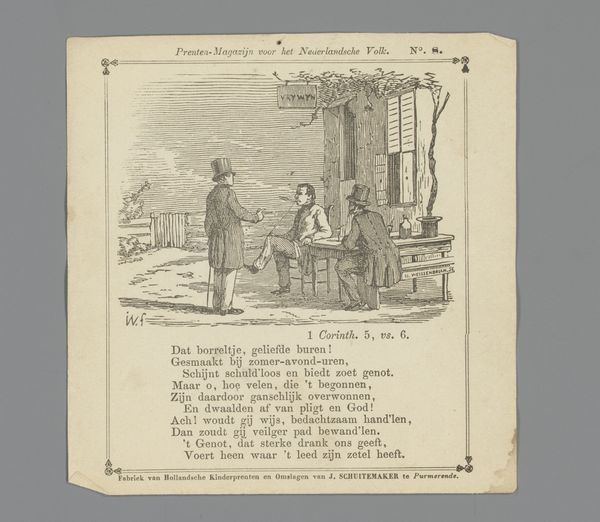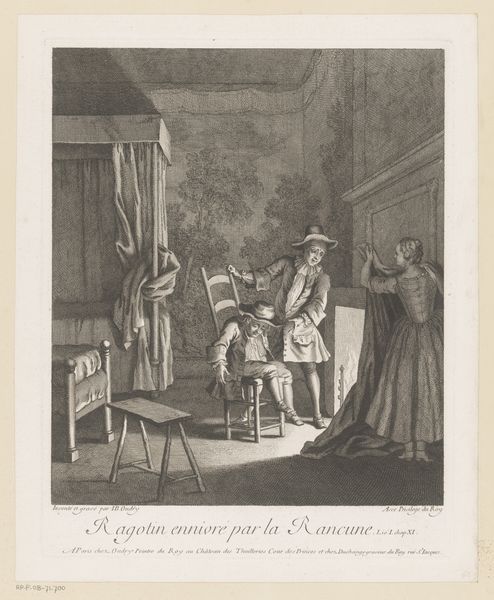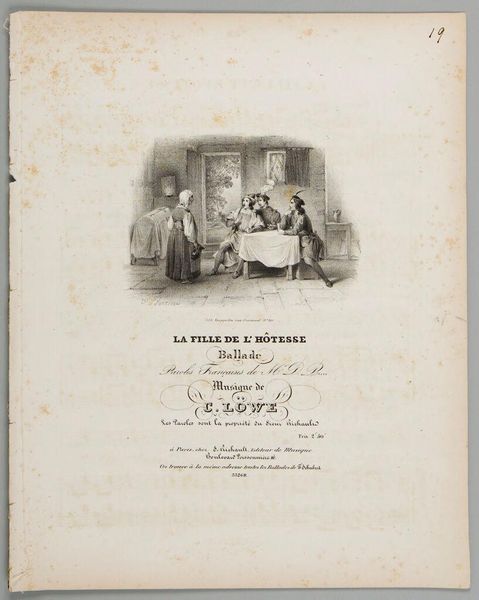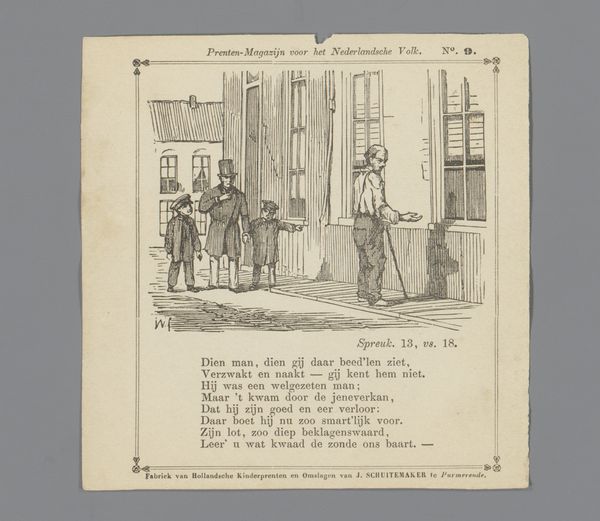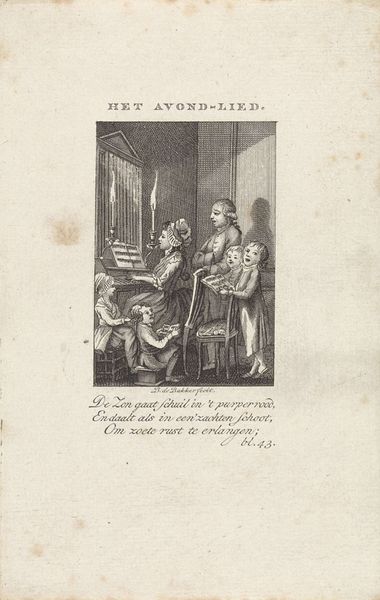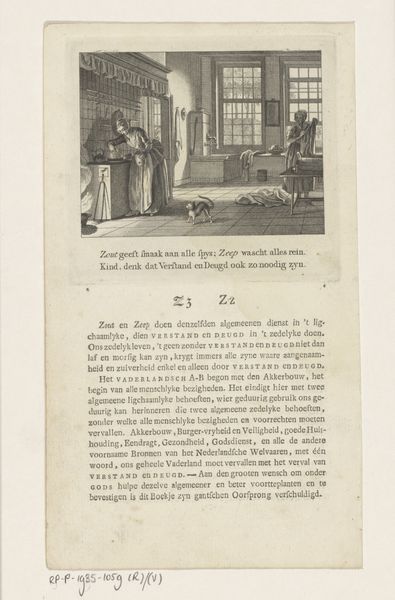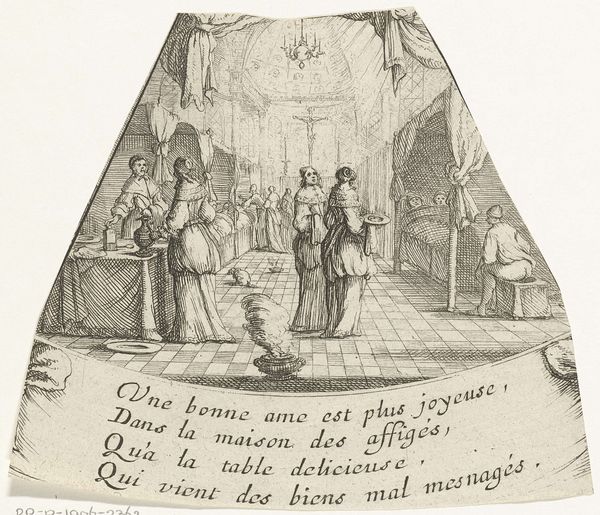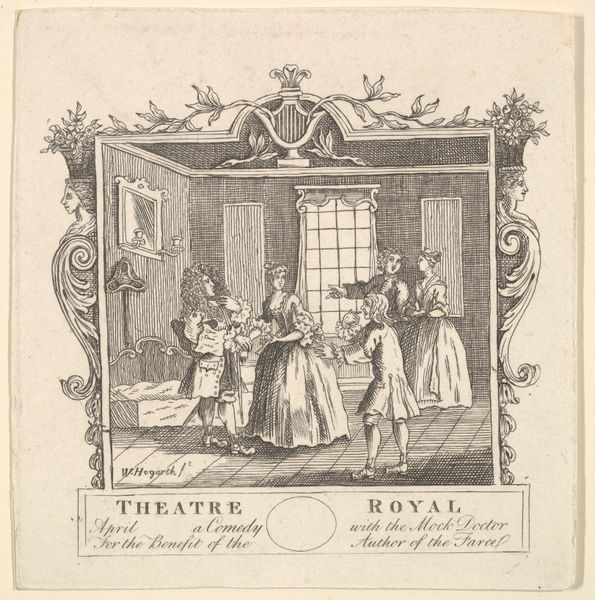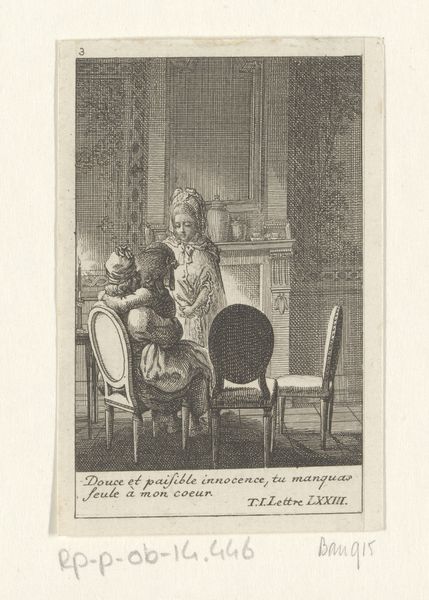
print, engraving
#
narrative-art
# print
#
old engraving style
#
romanticism
#
genre-painting
#
engraving
Dimensions: height 150 mm, width 94 mm
Copyright: Rijks Museum: Open Domain
Curator: I'm intrigued by this 1826 engraving entitled "Interieur met twee kinderen voor een kijkkast," or "Interior with two children before a peep box" here at the Rijksmuseum by Willem Hendrik Hoogkamer. It presents quite an intimate scene. Editor: My immediate response is one of nostalgia, actually. The softness of the engraving, its grayscale palette… there's a quaint charm here, almost sentimental. Curator: Precisely! Observe the strategic deployment of light and shadow—how it sculpts the forms within the circular frame. The composition leads your eye from the children offering flowers, to the invalid seated beside the peep box, then toward the fireplace. Editor: That’s a great point. Looking closer, it seems there’s more to it than simply recording an anecdotal interaction. What were the precise materials being employed in this reproduction, I wonder? Was it purely a commercial transaction between the engraver, publisher and audience or more complex? What socio-cultural value did these items possess? Curator: One can appreciate Hoogkamer's careful balance between realistic detail and idealised form. See how the children’s gestures create a certain tension that could convey both curiosity and even innocence? Note also that it employs signifiers of Romanticism as an established artistic language. Editor: Well, if we acknowledge printmaking’s function as the popular medium of its day, how might this image have shaped or reinforced ideas around childhood, disability, even entertainment? It suggests themes of home entertainment for both able bodied and non-able bodied which is so fascinating for such an era. Curator: It presents a vision of domesticity that engages us with complex emotions and offers narratives about family. The way Hoogkamer organizes the components demonstrates mastery of formal strategies for expression, for meaning-making itself. Editor: True, I now look at the engraving in a very different way by reflecting on the tools that went into this scene. I keep on coming back to the importance of the labour in crafting the scene through which domestic and social ideals circulated. It makes the process of artmaking much more thought provoking. Curator: Indeed. Analyzing these compositional techniques enables the work to provide enduring, rich meanings within the Romantic style. Editor: Understanding the labour and materials helps expose just how carefully curated these ideals actually were—and still are. Thanks.
Comments
No comments
Be the first to comment and join the conversation on the ultimate creative platform.
